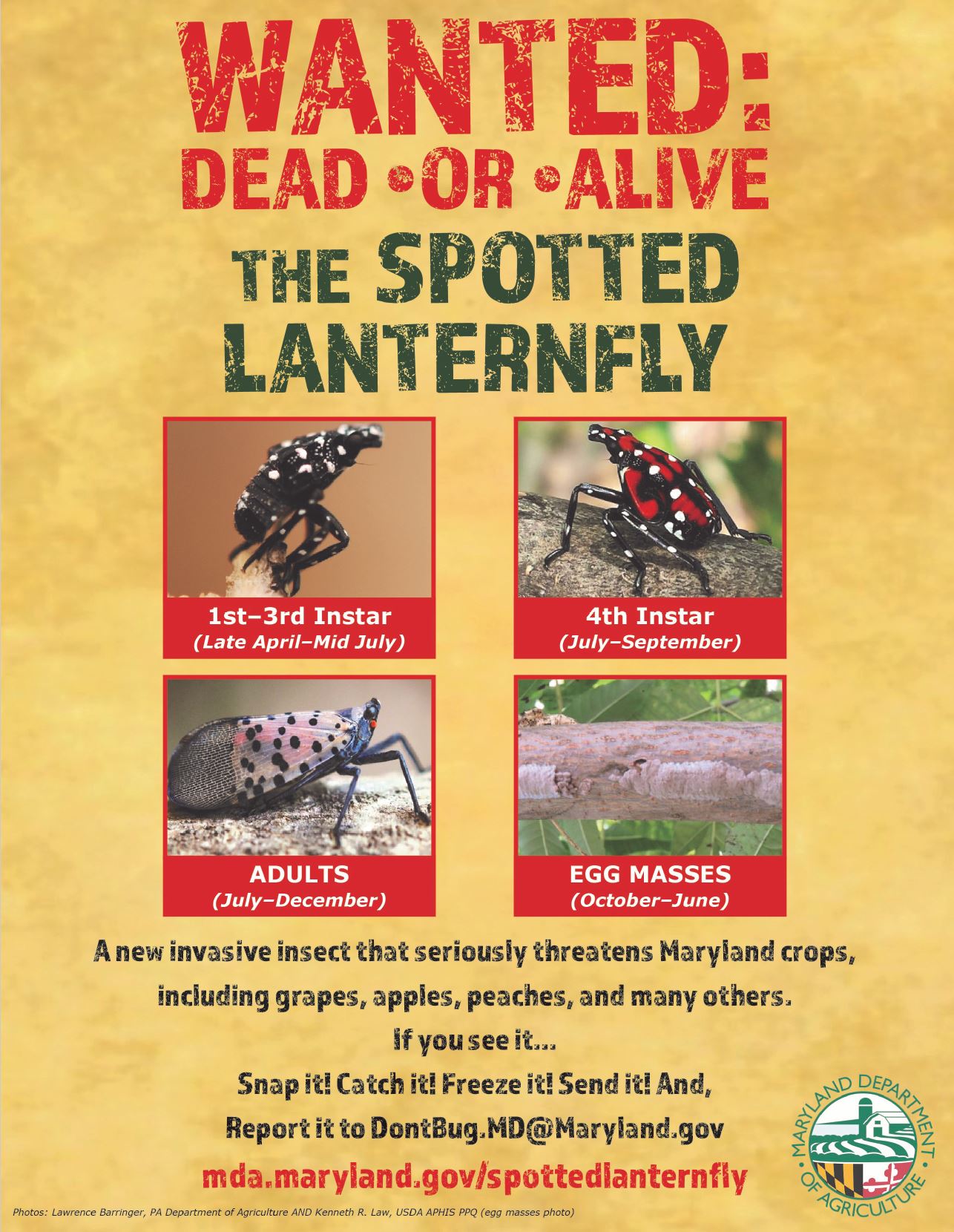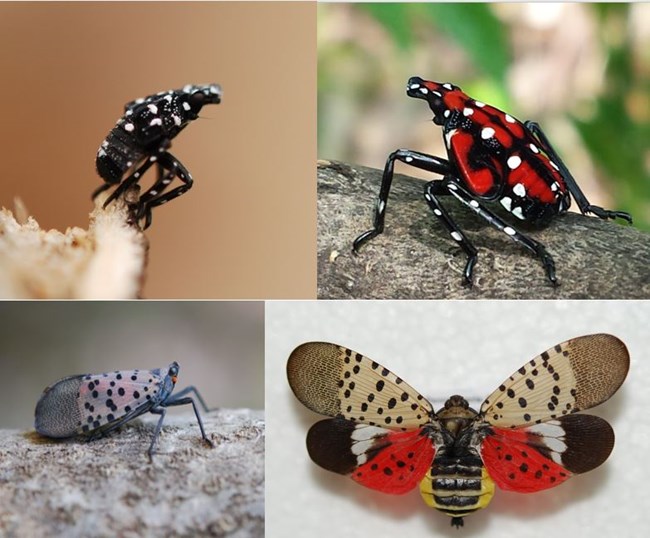You may have seen the “WANTED: Dead or Alive” billboards in Maryland—not for a criminal fugitive, but for the invasive and destructive spotted lanternfly. Now the state says they’ve permeated nearly every county.
The insect is a farmer’s nightmare, feeding on 70 different crops. And it fuels the growth of a black substance called sooty mold, which can prevent photosynthesis and cover homeowners’ decks, cars, and more.
The spotted lanternfly originates from Asia and first showed up in Berks County, Pennsylvania in 2014. A known hitchhiker, it has since spread to Maryland, Connecticut, Delaware, Indiana, New Jersey, New York, Ohio, Virginia and West Virginia.
The bug first forayed into Maryland’s Cecil County, and experts predicted it would soon spread further into the state. They were right.

“They can lay their eggs on any vertical surface,” Emily Zobel, an entomologist and UMD extension agent associate from Dorchester County, told us in 2021, “including on vehicles like trains and trucks.”
This month, the Maryland Department of Agriculture expanded its spotted lanternfly quarantine to include the following counties: Allegany, Anne Arundel, Baltimore, Calvert, Caroline, Carroll, Cecil, Frederick, Harford, Howard, Kent, Montgomery, Prince George’s, Queen Anne’s, Talbot, Washington and Wicomico, as well as Baltimore City. Here is a map of the new quarantine zone.
“The spotted lanternfly continues to be a destructive invasive species that has negatively impacted agriculture operations throughout the mid-Atlantic region,” said MDA Secretary Kevin Atticks. “The department continues to take steps to expand the quarantine zone out of an abundance of caution as we remain vigilant in controlling the spread of this destructive insect.”
The quarantine is effective immediately, and restricts the movement of “regulated items” that might contain the spotted lanternfly in any of its life stages, including egg masses, nymphs, and adults.
These regulated items include things like landscaping, remodeling, or construction waste; packing materials like wood boxes or crates; plants and plant parts; vehicles; and other outdoor items.
Businesses and agencies must have a special permit to move any regulated items. Business or organization employees can get the permit by taking a free online training course and exam, demonstrating a working knowledge of the quarantine requirements. All spotted lanternfly permits for Maryland, Virginia, Pennsylvania, New Jersey, and Delaware are transferable and valid throughout the region.
Among the many crops the spotted lanternfly likes to feed on, many Bay-region plants are at risk, including grapes, hops, apples, peaches, oak, pine, and many others.
The Department of Agriculture asks everyone living in the quarantine zone to be vigilant and report sightings through its online survey.
-Meg Walburn Viviano




